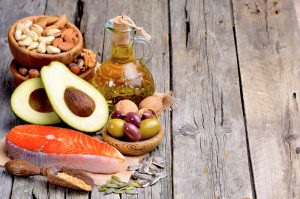
Nutritional panels demystified…
We know we should read the food labels for all the hidden stuff, but how many actually know how to interpret those daunting looking tables?
Not many it turns out!
In Australia 2 out of 3 adults and 1 in 4 children are overweight or obese.
Somewhere along the road we lost the ability to decipher what is right and what is wrong for us.
So here are some simple things to look for when reading the back of packs in the supermarket aisle…
Firstly look at the ingredients list: these are written in order of most to less, so if sugar appears in the first few ingredients of a long list then it’s best to put it back on the shelf. Remember sugar can be written in a number of ways: anything ending in ‘ose’ is a sugar – you’ll be surprised how many hidden sugars are in your favourite foods when you start scanning for the ‘ose’!
Next, look at the table.
 Within the carbohydrate section you’ll find a sub-section called ‘sugars’: these are refined sugars and the ones you want to avoid. Each 4g is equivalent to a teaspoon of sugar. Then compare this to the overall carbohydrate figure – if it’s a high percentage (>10%) then it’s a product best avoided.
Within the carbohydrate section you’ll find a sub-section called ‘sugars’: these are refined sugars and the ones you want to avoid. Each 4g is equivalent to a teaspoon of sugar. Then compare this to the overall carbohydrate figure – if it’s a high percentage (>10%) then it’s a product best avoided.
If you’re comparing two products refer to the ‘100g column’ for a like vs like comparison.
Be aware of ‘low fat’ or ‘gluten free’ health claims – the taste has usually been modified by adding sugar to make it palatable.
Look for trans fats by another name – shortening and hydrogenated fat are bad, bad news. Avoid at all costs. They will clog your arteries and wind their way to parts of your body where they shouldn’t ever venture. These fats are oxidised and will cause free radical damage in your body – that my friends equals premature ageing and all its evils…
Instead look for good oils – remember most pre-packaged foods contain vegetable oils which throw your omega 3 to 6 ratio out causing inflammation in the body. Instead choose olive oils, coconut oil or good nuts oils.
 Finally, make a conscious decision about salt.
Finally, make a conscious decision about salt.
Check the column marked ‘sodium’. Most of us get way to much of this through processed and commercially prepared meals. Whilst we do need a little good quality salt for our electrolyte balance too much is not good for us and will lead to hypertension and heart disease.
Our total daily intake should be less than 2.3g and should easily be attainable throughout the day without adding additional salt to our cooking, or via processed food.
The majority of people need to cut down so be mindful when reading nutritional panels and anything over 50mg per serve should be questioned!







